
Deer have always munched on garden plants, but due to continued loss of habitat and natural predators, deer populations and their garden-devouring forays are on the rise across the United States and Canada. Dealing with plant loss due to deer browsing can be both frustrating and costly (as deer seem to be able to read price tags and only eat the most expensive plants). Among the best strategies for contending with this issue, however, is to pick plants that deer won’t eat in the first place, and to avoid the ones they will.
Learn more
A Garden Plan for a Beautiful, Deer-Resistant Border
4 Techniques for Managing Deer in Your Garden
Generally speaking, deer steer clear of plants that are toxic, have a strong fragrance or a bitter taste, or have fuzzy, prickly, or fine-textured leaves. But if deer are hungry enough, they will eat just about anything. In a gardener’s endeavor to select suitable plants, it is easy to lose sight of the intended design in favor of prioritizing deer resistance. I like to encourage gardeners to consider the plant attributes they are looking for before they head to the nursery. Is it fragrance or a particular color that you are after? Is it screening or a spreading habit? With those goals defined, you should then explore deer-resistant plants that meet those criteria. Finally, be aware that it is often flowers and buds that are eaten, so you should try seeking out plants that offer colorful leaves (in addition to any seasonal flowers) to ensure that your garden always looks its best even when little is in bloom.
There are many classic plants that deer eat but a gardener facing deer pressure may wish to grow. If you are longing for the signature look or attractive attributes of one of those “deer food” plants, there are many alternatives with similar traits you can use instead.
Deer-Food Plant: Roses

Rosa spp. and cvs.
Zones: 3–9
It’s a hard reality to accept, but deer love roses. Many gardeners dream of growing these old-time favorites, whether for their color, their perfume, their ability to clothe a pergola, or simply because they can rekindle childhood memories. Roses are so versatile; there are both bush and climbing forms, and most thrive in full sun to partial shade. When considering an alternative that the deer will ignore, be sure to evaluate which attribute—fragrance, form, or something else—is most important to you.
Alternative plant: ‘Coral Charm’ peony

Paeonia ‘Coral Charm’
Zones: 3–8
Size: 2 to 3 feet tall and wide
Conditions: Full sun; well-drained soil
Native range: Hybrid
Herbaceous peonies are the perfect substitute for roses if you are seeking beautiful, fragrant flowers that you can cut for arrangements. Many also have attractive foliage that enhances the garden from spring through fall—something that few roses can offer. ‘Coral Charm’ is one of my new favorite peonies. The color is neither too orange nor too pink, making it an easy companion for most garden plants, and the luscious semi-double flowers have a pleasant perfume as they mature.
Try These Too
 Fool Proof™ gardenia (Gardenia ‘Leesix’, Zones 7–10) |
 ‘Miss Kim’ lilac (Syringa pubescens subsp. patula ‘Miss Kim’, Zones 3–8) |
Deer-Food Plant: Bigleaf Hydrangea

Hydrangea macrophylla and cvs.
Zones: 5–9
Thriving in average, moisture-retentive garden soil, these mounding shrubs are summer stars with their blue, pink, or white blossoms that often last into fall. They prefer full morning sun and dappled afternoon shade, especially in warmer climates. Sadly, deer love them as much as gardeners do and will happily eat every single flower, leaving behind just tattered stalks and torn leaves.
Alternative plant: All That Glitters® arrowwood viburnum

Viburnum dentatum var. deamii ‘SMVDLS’
Zones: 4–8
Size: 4 to 5 feet tall and wide
Conditions: Full sun to partial shade; moist, well-drained soil
Native range: Midwestern United States
More than just an alternative to bigleaf hydrangea, this shrub offers several additional qualities. Clusters of white flowers in spring mature to shiny blue fruit in fall that the birds enjoy but the deer leave alone. All That Glitters® grows to a similar size as bigleaf hydrangea and adapts to partial shade or full sun. This plant would make a stunning low-maintenance hedge with its glossy green foliage, offering an attractive backdrop for bright, deer-resistant perennials such as coneflowers or black-eyed Susans.
Try These Too
 Summer Ruffle™ rose of Sharon (Hibiscus syriacus* ‘Aarticus’, Zones 5–9) |
 Lil Miss Sunshine® bluebeard (Caryopteris × clandonensis ‘Janice’, Zones 5–9) |
Deer-Food Plant: Daylilies

Hemerocallis spp. and cvs.
Zones: 3–10
Available in a rainbow of colors and ranging in height from 1 to 5 feet tall, daylilies are as popular with collectors as they are with everyday gardeners. Unfortunately, they are just as desirable to deer, who will eat every last bud, leaving gardeners with a sad mound of strappy leaves and ragged stems.
Alternative plant: PowWow® Wild Berry coneflower

Echinacea purpurea ‘PAS702917’
Zones: 3–8
Size: 2 to 3 feet tall and 1 to 1½ feet wide
Conditions: Full sun to partial shade; well-drained soil
Native range: Eastern North America
Coneflowers are the best alternative to daylilies if you are looking for a comparable color range. The long-blooming PowWow® series offers some of the strongest-performing cultivars out there, with Wild Berry being my favorite. Butterflies and bees love the daisy-like flowers, which are also ideal for cut-flower arrangements. The drought tolerance of this plant is a welcome bonus. Leave the seed heads to stand through winter, and enjoy watching the antics of birds as they forage for snacks. Even in small gardens I recommend planting these in groups of at least seven for the best impact. Planting en masse also helps to reduce the appearance of any minor taste testing that deer might attempt.
Try These Too
 ‘Goldsturm’ black-eyed Susan (Rudbeckia fulgida var. sullivantii ‘Goldsturm’, Zones 3–9) |
 ‘Zagreb’ threadleaf coreopsis (Coreopsis verticillata ‘Zagreb’, Zones 3–9) |
Deer-Food Plant: Tulips

Tulipa spp. and cvs.
Zones: 3–8
Who can resist adding a selection of spring-flowering bulbs to their garden? Tulips are popular for their wide range of cheery colors, which are especially welcome after months of gray. Before I had to share my garden with deer, I used to plant dwarf varieties in all my container gardens and choose taller selections to plant in the landscape. I quickly realized that wasn’t an option when several deer families began to see them as their preferred spring breakfast buffet.
Alternative plant: ‘Red Beauty’ crown imperial fritillary

Fritillaria imperialis ‘Red Beauty’
Zones: 4–8
Size: 2 to 4 feet tall and 1 foot wide
Conditions: Full sun to partial shade; well-drained soil
Native range: Southwestern Asia
For show-stopping color that can be seen from across the garden, ‘Red Beauty’ crown imperial fritillary is the perfect choice. With its unexpected tropical vibe, it screams, “Spring is here!” Plant these bulbs in groups of at least five for the best effect. I like to place them on the sunny edge of my woodland border, where late-emerging perennials will hide their fading stems.
Try These Too
 ‘Jetfire’ daffodil (Narcissus ‘Jetfire’, Zones 3–9) |
 ‘Woodstock’ hyacinth (Hyacinthus orientalis ‘Woodstock’, Zones 4–9) |
Deer-Food Plant: Hostas

Hosta spp. and cvs.
Zones: 3–9
Appreciated for their bold foliage, hostas come in a variety of colors and exciting variegations. They thrive in shade and moisture-retentive soil; unfortunately, slugs also relish such conditions, and they love hostas almost as much as deer do. The fight against hosta pests is a relentless, thankless battle, and I’ve given up and pulled more than a few of them out of my garden over the years.
Alternative plant: ‘Hadspen Cream’ brunnera

Brunnera macrophylla ‘Hadspen Cream’
Zones: 3–7
Size: 1 to 1½ feet tall and 1½ to 2 feet wide
Conditions: Partial to full shade; well-drained soil
Native range: Eastern Europe
One of the first perennials to emerge in spring and one of the last to die back in fall, ‘Hadspen Cream’ brunnera has large, mid-green, heart-shaped leaves with thick, creamy margins that shine in the shade and are reliably ignored by both deer and rabbits; they are just occasionally damaged by slugs. Early spring sees sprays of blue forget-me-not-like flowers dancing above the foliage. Be aware that seedlings are unlikely to come true to type and so are best removed. The mother plant will spread slowly from rhizomes to create a thick carpet.
Try These Too
 ‘Axminster Gold’ variegated comfrey (Symphytum × uplandicum ‘Axminster Gold’, Zones 4–7) |
 ‘Spot On’ lungwort (Pulmonaria ‘Spot On’, Zones 3–9) |
Deer-Food Plant: Ninebark

Physocarpus opulifolius and cvs.
Zones: 2–8
I love almost everything about ninebarks: spring flowers, beautiful foliage colors, fall interest, peeling bark, and low maintenance. The only thing not to love is that deer consider them a tasty treat. Unless these shrubs are tucked at the very back of deep borders, my local herd will seek them out, trampling over everything to reach them.
Alternative plant: Wine & Roses® weigela

Weigela florida ‘Alexandra’
Zones: 4–8
Size: 4 to 5 feet tall and wide
Conditions: Full sun to partial shade; well-drained soil
Native range: Korea, Japan, northern China
Weigela is always my first choice for a ninebark alternative if foliage color is a prime consideration. Drought tolerant and reliably deer resistant, weigela thrives in conditions similar to those preferred by ninebark, and multiple varieties are available in different heights and colors. Wine & Roses® has lovely dark purple leaves, and its tubular, deep-pink blooms entice hummingbirds. This shrub features nice fall color and, like ninebark, is easy to care for.
Try These Too
 Black Lace® elderberry (Sambucus nigra ‘Eva’, Zones 4–7) |
 ‘Ogon’ spirea (Spiraea thunbergii ‘Ogon’, Zones 4–8) |
Deer-Food Plant: American Arborvitae

Thuja occidentalis and cvs.
Zones: 2–7
Columnar varieties of this conifer are a popular choice for privacy screening, especially where space is limited, because they grow to 15 feet tall and just 3 feet wide. Many builders and homeowners plant these as an expansive green fence. Deer, on the other hand, see arborvitae as a blank canvas to try out their sculpting skills and will carve them overnight. There are some good alternatives that will defeat the deer, but I always recommend that rather than planting a monoculture of any one species for a hedge, you incorporate a variety of evergreens. This gives you some reassurance that if the deer decide this is the year to taste-test one plant, your garden design will still hold up.
Alternative plant: ‘Blue Arrow’ juniper

Juniperus scopulorum ‘Blue Arrow’
Zones: 4–9
Size: 12 to 15 feet tall and 2 to 4 feet wide
Conditions: Full sun; well-drained soil
Native range: Western North America This tree is a close approximation to columnar arborvitae since it is also an evergreen conifer of a similar size and thrives in similar conditions. However, it is reliably deer resistant. ‘Blue Arrow’ features striking powder-blue foliage. While this juniper will stay tall and skinny and is perfect for screening, it will take on a pyramidal shape as it matures. Its base can easily reach 4 feet wide, with the uppermost tip being much narrower.
Try These Too
 Chinese podocarpus (Podocarpus macrophyllus var. maki, Zones 7–9) |
 ‘Goshiki’ osmanthus (Osmanthus heterophyllus ‘Goshiki’, Zones 6–9) |
Deer-Food Plant: Japanese Holly

Ilex crenata and cvs.
Zones: 5–7
This dense, broadleaf evergreen is popular as a foundation plant, tolerating both full sun and partial shade. All varieties are considered low-maintenance shrubs and take well to shearing, making them popular for hedging, topiary, and even container design. Unfortunately, they are also beloved by deer.
Alternative plant: ‘Little Missy’ boxwood

Buxus microphylla ‘Little Missy’
Zones: 5–9
Size: 2 to 3 feet tall and 3 to 4 feet wide
Conditions: Full sun to partial shade; well-drained soil
Native range: Japan
If your aim is to plant a low-growing hedge, ‘Little Missy’ boxwood could be a perfect deer-resistant choice. This shrub has a naturally rounded habit, but it also takes to shearing if you prefer a more formal appearance. And while many older varieties of boxwood are susceptible to boxwood blight, ‘Little Missy’ has demonstrated excellent resistance.
Try These Too
 Gem Box® inkberry (Ilex glabra ‘SMNIGAB17’, Zones 5–9) |
 Thunderbolt® box honeysuckle (Lonicera nitida ‘Golden Glow’, Zones 5–9) |
Tip: Check your plant for deer resistance online
One of the best online resources I have come across for researching deer-resistant plants is the New Jersey Agricultural Experiment Station (NJAES) website. You can type in the common or botanical name of hundreds of popular plants to determine their level of deer resistance, from A (rarely damaged) to D (frequently severely damaged). Check it out here: njaes.rutgers.edu/deer-resistant-plants
*Invasive Alert:
Rose of Sharon (Hibiscus syriacus)
This plant is considered invasive in TN and WV.
Please visit invasiveplantatlas.org for more information.
Karen Chapman is a landscape designer in Duvall, Washington, and the author of Deer-Resistant Design: Fence-Free Gardens That Thrive Despite the Deer.
Sources
The following mail-order sources may offer some of the plants featured in this article:
- Sooner Plant Farm, Park Hill, OK, 918-453-0771; soonerplantfarm.com
- Digging Dog Nursery, Albion, CA, 707-937-1130; diggingdog.com
- White Flower Farm, Litchfield, CT, 800-503-9624; whiteflowerfarm.com
- Conifer Kingdom, Silverton, OR, 503-874-4123; coniferkingdom.com
- American Meadows, Burlington, VT, 802-227-7200; americanmeadows.com
- Brent & Becky’s Bulbs, Gloucester, VA, 804-693-3966; brentandbeckysbulbs.com

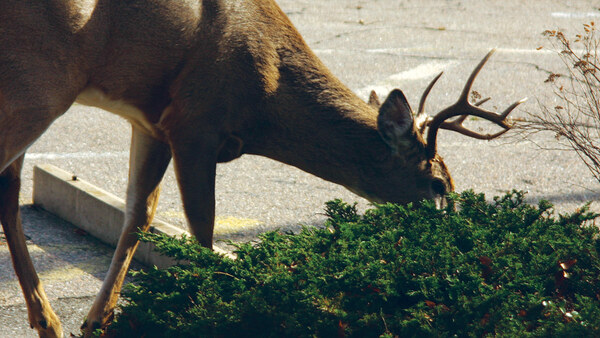
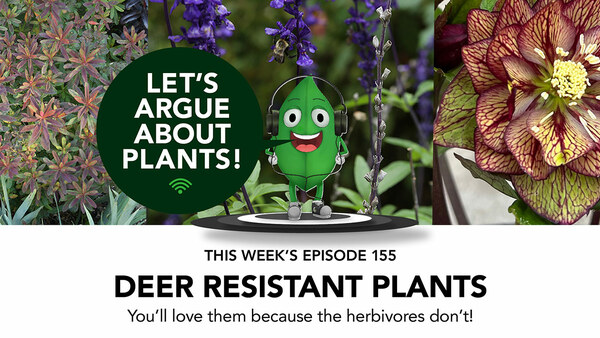
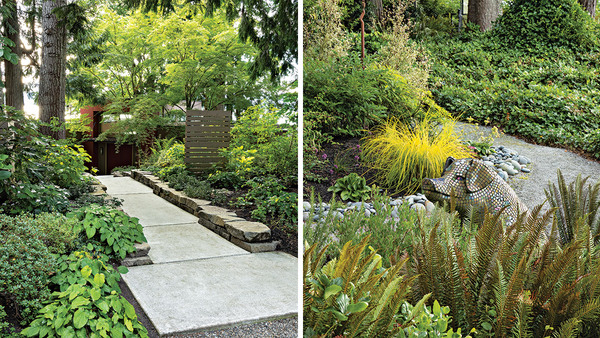
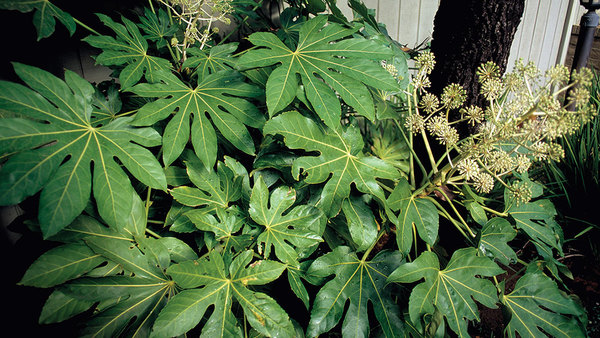

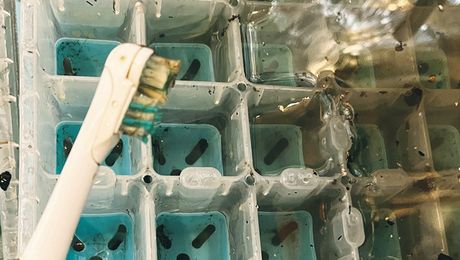










Comments
Every deer herd has their own favourites so no plant is deer proof. Making them unpalatable the moment you plant them goes a long ways to changing their taste preferences
Log in or create an account to post a comment.
Sign up Log in